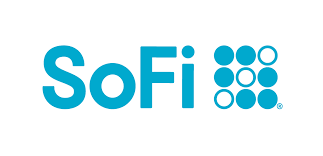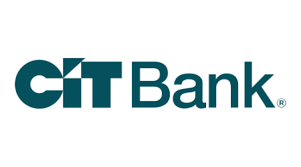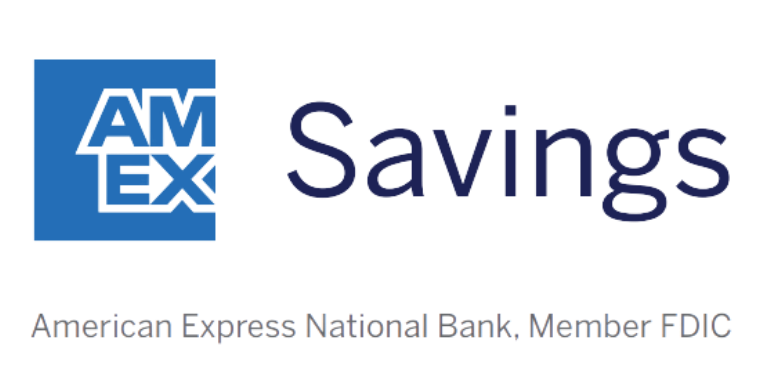CDs and savings accounts both earn you interest on your deposits, but one is not like the other. A CD locks up your money for six months to five years but can typically earn you better returns than a savings account can.
Here's the quick way to choose between CDs vs. savings accounts: Open a CD to earn interest on money you'll leave untouched until the full CD term is up. Open a savings account to earn interest on money you may need anytime.
Still on the fence? Read on. Below, we'll compare the features of CDs vs. savings accounts so you can choose with confidence which deposit account is right for you.
Savings accounts
A savings account is an interest-bearing deposit account that typically pairs with a checking account. You can deposit money anytime. You may withdraw or transfer money six times or more monthly (per Regulation D), depending upon your bank or credit union.
- Flexible: You can transfer savings account funds to a checking account in order to spend your money via checks and debit cards. You can transfer money from a checking account to a savings account anytime with no penalty.
- Insured: Savings accounts are either FDIC- or NCUA-insured, depending on whether you use a bank or credit union. Regardless, you're insured up to $250,000 within limits. FDIC insurance protects you should your bank suddenly fail and file for bankruptcy.
Compare savings rates
Make sure you're getting the best account for you by comparing savings rates and promotions. Here are some of our favorite high-yield savings accounts to consider.
| Account | APY | Promotion | Next Steps |
|---|---|---|---|

Open Account for SoFi Checking and Savings
On SoFi's Secure Website.
Rating image, 4.50 out of 5 stars.
4.50/5
Our ratings are based on a 5 star scale.
5 stars equals Best.
4 stars equals Excellent.
3 stars equals Good.
2 stars equals Fair.
1 star equals Poor.
We want your money to work harder for you. Which is why our ratings are biased toward offers that deliver versatility while cutting out-of-pocket costs.
|
up to 3.80%²
Rate info
You can earn the maximum APY by having Direct Deposit (no minimum amount required) or by making $5,000 or more in Qualifying Deposits every 30 days. See SoFi Checking and Savings rate sheet at: https://www.sofi.com/legal/banking-rate-sheet.
Min. to earn: $0
|
New customers can earn up to a $300 bonus with qualifying direct deposits!¹
|
Open Account for SoFi Checking and Savings
On SoFi's Secure Website. |

Open Account for CIT Platinum Savings
On CIT's Secure Website.
Rating image, 4.50 out of 5 stars.
4.50/5
Our ratings are based on a 5 star scale.
5 stars equals Best.
4 stars equals Excellent.
3 stars equals Good.
2 stars equals Fair.
1 star equals Poor.
We want your money to work harder for you. Which is why our ratings are biased toward offers that deliver versatility while cutting out-of-pocket costs.
|
4.10% APY for balances of $5,000 or more
Rate info
4.10% APY for balances of $5,000 or more; otherwise, 0.25% APY
Min. to earn: $100 to open account, $5,000+ for max APY
|
Earn a bonus of at least $225 after a one-time deposit of $25,000+.
Transfer a one-time deposit of $25,000-$49,999.99 for a bonus of $225. Transfer a one-time deposit of $50,000+ for a bonus of $300. Account must be opened with code PS2025 while this promotion lasts, and funded within 30 days. Bonus will be fulfilled within 60 days from the funding date. There is no period of time where the customer will be required to maintain the funds. Account must be open when bonus is credited. One bonus per account and primary customer. Bonus will be credited into the Platinum Savings Account that fulfills the funding requirement. Funding can be deposited all at once or incrementally.
|
Open Account for CIT Platinum Savings
On CIT's Secure Website. |

Open Account for American Express® High Yield Savings
On American Express's Secure Website.
Rating image, 4.00 out of 5 stars.
4.00/5
Our ratings are based on a 5 star scale.
5 stars equals Best.
4 stars equals Excellent.
3 stars equals Good.
2 stars equals Fair.
1 star equals Poor.
We want your money to work harder for you. Which is why our ratings are biased toward offers that deliver versatility while cutting out-of-pocket costs.
|
3.70%
Rate info
3.70% annual percentage yield as of April 10, 2025. Terms apply.
Min. to earn: $0
|
N/A
|
Open Account for American Express® High Yield Savings
On American Express's Secure Website. |
SoFi disclosure:
¹ New and existing Checking and Savings members who have not previously enrolled in Direct Deposit with SoFi are eligible to earn a cash bonus of either $50 (with at least $1,000 total Direct Deposits received during the Direct Deposit Bonus Period) OR $300 (with at least $5,000 total Direct Deposits received during the Direct Deposit Bonus Period). Cash bonus will be based on the total amount of Direct Deposit. Direct Deposit Promotion begins on 12/7/2023 and will be available through 1/31/26. See full bonus and annual percentage yield (APY) terms at sofi.com/banking#1.
² SoFi members who enroll in SoFi Plus with Direct Deposit or by paying the SoFi Plus Subscription Fee every 30 days or with $5,000 or more in Qualifying Deposits during the 30-Day Evaluation Period can earn 3.80% annual percentage yield (APY) on savings balances (including Vaults) and 0.50% APY on checking balances. There is no minimum Direct Deposit amount required to qualify for the stated interest rate. Members without either SoFi Plus or Qualifying Deposits, during the 30-Day Evaluation Period will earn 1.00% APY on savings balances (including Vaults) and 0.50% APY on checking balances. Only SoFi Plus members are eligible for other SoFi Plus benefits. Interest rates are variable and subject to change at any time. These rates are current as of 1/24/25. There is no minimum balance requirement. Additional information can be found at http://www.sofi.com/legal/banking-rate-sheet. See the SoFi Plus Terms and Conditions at https://www.sofi.com/terms-of-use/#plus.
³ We do not charge any account, service or maintenance fees for SoFi Checking and Savings. We do charge a transaction fee to process each outgoing wire transfer. SoFi does not charge a fee for incoming wire transfers, however the sending bank may charge a fee. Our fee policy is subject to change at any time. See the SoFi Checking & Savings Fee Sheet for details at sofi.com/legal/banking-fees/.
⁴ SoFi Bank is a member FDIC and does not provide more than $250,000 of FDIC insurance per depositor per legal category of account ownership, as described in the FDIC’s regulations.
Any additional FDIC insurance is provided by the SoFi Insured Deposit Program. Deposits may be insured up to $3M through participation in the program. See full terms at SoFi.com/banking/fdic/sidpterms. See list of participating banks at SoFi.com/banking/fdic/participatingbanks.
⁵ We’ve partnered with Allpoint to provide you with ATM access at any of the 55,000+ ATMs within the Allpoint network. You will not be charged a fee when using an in-network ATM, however, third-party fees incurred when using out-of-network ATMs are not subject to reimbursement. SoFi’s ATM policies are subject to change at our discretion at any time.
⁶ Early access to direct deposit funds is based on the timing in which we receive notice of impending payment from the Federal Reserve, which is typically up to two days before the scheduled payment date, but may vary.
⁷ Overdraft Coverage is limited to $50 on debit card purchases only and is an account benefit available to customers with direct deposits of $1,000 or more during the current 30-day Evaluation Period as determined by SoFi Bank, N.A. The 30-Day Evaluation Period refers to the “Start Date” and “End Date” set forth on the APY Details page of your account, which comprises a period of 30 calendar days (the“30-Day Evaluation Period”). You can access the APY Details page at any time by logging into your SoFi account on the SoFi mobile app or SoFi website and selecting either (i) Banking > Savings > Current APY or (ii) Banking > Checking > Current APY. Members with a prior history of non-repayment of negative balances are ineligible for Overdraft Coverage.
Certificates of deposit (CDs)
A CD, or certificate of deposit, is a "fixed" type of interest-bearing bank account that locks up your money for an agreed-upon length of time. You give up access to your funds for a specified period. In return, you receive a higher interest rate than you would through a typical savings account.
- Withdrawal penalties: CD terms typically range from six months to five years. If you withdraw money early, you'll usually pay a penalty. This penalty could shrink your earnings, or worse, lose you money. Should you need your money early, you must withdraw 100% of your deposit.
- Initial deposits: CDs tend to require high initial deposits. CDs don't let you deposit additional money until the term expires.
- Insured: CDs are insured through either the FDIC or the NCUA, depending on whether you open an account through a bank or credit union. Deposits are insured up to $250,000 within limits. Insurance protects your deposits should the bank go belly-up.
CDs vs. savings accounts
CDs and savings accounts both earn you interest on your deposits.
CDs earn you the highest possible interest rates, but savings accounts let you make some monthly withdrawals for free. It's a tradeoff: profitability versus flexibility.
Compare CDs vs. savings account features below.
| Feature | CD | Savings Account |
|---|---|---|
| High initial deposit | Yes | No |
| Easy withdrawal | No | Yes |
| ATM access | No | No |
| Check-writing | No | No |
| Monthly fees | No | Varies |
| High interest rates | Yes | Yes |
| Early withdrawal fees | Yes | No |
When to open a savings account
You should open a savings account when you want to earn money on deposits you may need to withdraw whenever. Savings accounts help you save for uncertain times.
For example, say you want to protect yourself in case you lose your job. You don't know when that may happen -- it could be tomorrow, two years from now, or never. You can put money in a savings account and call it your emergency fund. You'll earn passive interest income, and should you suddenly lose your job, you can withdraw money immediately to pay rent.
A savings account offers better rates than CDs do for unspecific terms (lengths of time). You can withdraw money earlier than expected without paying fees -- meaning more money in your pocket.
Many people are missing out on guaranteed returns as their money languishes in a big bank savings account earning next to no interest. Motley Fool Money's top savings account picks can earn you more than 10x the national average savings account rate.
When to open a CD
You should open a CD when you want to earn money on deposits over specific time periods. CDs help you save for specific goals. CDs are inflexible, and you can use that to your advantage.
For example, say you want to purchase a used car in two years. You can put money in a 2-year CD and call it "car money." The threat of withdrawal penalties will discourage you from spending that money before two years is up. When the term ends, you'll have the initial deposit to spend toward purchasing a used car, plus interest.
A CD offers better rates than a savings account for specific terms (lengths of time). Withdrawal penalties encourage you to keep your money deposited, reducing temptation to spend.
We've scanned the most popular banks to find CDs with high interest rates to make your money work harder for you. Get started by clicking below.
How to open a CD or savings account
Ready to move on to opening an account? You can do so easily. Below is a checklist of steps you can follow to quickly open a bank account online:
How to open a CD or savings account online:
- Gather your relevant personal and financial information.
- Fill out the online application form.
- Fund the account.
Opening an account in person is even simpler (you'll have to travel, though). Just gather your personal details and head to the nearest bank branch. A representative will guide you through the process of opening an account. You may have to wait in line to speak to a representative.
FAQs
-
Yes, the best CD rates are typically better than the best savings account rates. That's because CDs give banks confidence you'll leave deposits alone. But some high-yield savings accounts offer rates compatible with average CDs. Shop around to get the best deals.
-
No, CDs are not safer than savings accounts. FDIC-insured banks protect both savings accounts and CDs from bankruptcy. And bank-level encryption protects both account types.
-
CDs lock up your money for six months to five years. You must pay penalties to withdraw early, and you must withdraw your entire deposit. But savings accounts often pay you lower returns.
We're firm believers in the Golden Rule, which is why editorial opinions are ours alone and have not been previously reviewed, approved, or endorsed by included advertisers. Motley Fool Money does not cover all offers on the market. Motley Fool Money is 100% owned and operated by The Motley Fool. Our knowledgeable team of personal finance editors and analysts are employed by The Motley Fool and held to the same set of publishing standards and editorial integrity while maintaining professional separation from the analysts and editors on other Motley Fool brands. Terms may apply to offers listed on this page. APYs are subject to change at any time without notice.